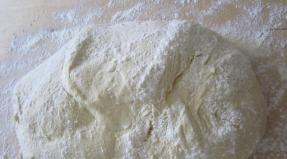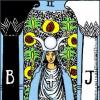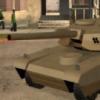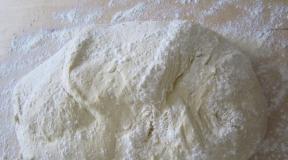Icon of the descent of Christ into hell. Easter - the way out of hell - Irzeis
history of the holiday
Two iconographic examples related to the theme of the Resurrection of Christ, “The Descent into Hell” and “The Resurrection,” are illustrations of two successive greatest events in gospel history. The first image depicts an event that occurred on the second day of Christ’s stay in the tomb and is remembered by the Church during worship Holy Saturday, and the second icon directly depicts the very triumph of the Resurrection.
The descent of Christ into hell is one of the most mysterious episodes of New Testament history, which has ambiguous interpretations in modern Christian theology. The essence of this event is that after the crucifixion, Jesus Christ descended into hell, crushing its gates, and, after preaching the Gospel in the underworld, freed the souls of those who listened to Him imprisoned there.
In early Christian writing, the mystery of Christ's descent into hell was reflected, first of all, in the apostolic letters and acts (1), as well as in many apocryphal sources (2). In the Gospel itself, the only mention of the event in question is the words of Christ addressed to the disciples: “As Jonah was in the belly of the whale for three days and three nights, so will the Son of Man be in the heart of the earth for three days and three nights”(Matt. 12:40).
In modern theology, there are two different points of view on such a fundamental moment of the event under consideration, as the question of who exactly Christ brought out of hell, which can be traced in the Orthodox and Catholic traditions of interpreting the descent into hell. Orthodox doctrine believes that Christ was followed by all the righteous prisoners in hell, led by Adam, and then by other people who responded to His gospel preaching. Traditional Catholic dogma, on the contrary, insists that Christ, after His death on the cross, descended into hell solely in order to bring out the Old Testament righteous from there (3). It should be noted that this opinion is quite widespread among Orthodox Christians, although this approach is far from the ancient Eastern Christian understanding (4).
The descent of Christ into hell for theologians, poets and mystics of the Eastern Church remains, first of all, a mystery about which nothing can be said definitely and definitively. That is why this topic has received relatively little attention in theological treatises, but it occupies an exceptionally important place in liturgical texts (5).
The event of the descent into hell was followed by the Resurrection of Christ, which occurred early in the morning on the first day of the week. According to the Gospel, the triumph of Christ's Resurrection was accompanied by a great earthquake. The stone from the door of the Holy Sepulcher was rolled away by an Angel, whose appearance was like lightning, and whose clothes were white as snow. The soldiers who stood guard and guarded the tomb, so that none of the disciples would steal the body of Christ, fled in fear. All four canonical Gospels narrate the event of the Resurrection of Christ (Matthew 28:1-15; Mark 16:1-14; Luke 24:1-48; John 20:1-31), since this sacrament is the meaning and basis our faith, in the words of the apostle: “If Christ has not been raised, our preaching is in vain, and your faith is also in vain.”(1 Cor. 15:14).

Establishment of a holiday
Mention of the event of Christ's descent into hell is found in Greek authors of the 2nd-3rd centuries, such as Polycarp of Smyrna, Ignatius the God-Bearer, Justin the Philosopher, Melito of Sardis, Hippolytus of Rome, Irenaeus of Lyons (6), Clement of Alexandria (7) and Origen (8). It should be noted that all the major writers of the “golden age of patristic writing” that followed them (IV century) in one way or another touched on the topic of Christ’s descent into hell, revealing it, first of all, in the context of the doctrine of atonement (Athanasius of Alexandria, Basil the Great, John Chrysostom, etc.).
The Holy Saturday service, which commemorates the event of the Descent of Christ into hell, has retained a number of characteristic features early Christian worship: the liturgical features of the celebration of this day can be traced back to the 4th century written monument called the “Pilgrimage of Egeria”.
“Holiday of Holidays” and “Celebration of Celebrations” light Christ's Resurrection(Easter) got its start back in the time of the apostles. In the letter to the Philippians, a contemporary of the apostles, Ignatius the God-Bearer, there is a mention of the Easter holiday as common in his time. In it, he gives instructions about the prohibition of celebrating it together with the Jews. Evidence has been preserved that initially the Resurrection of Christ was celebrated weekly, and only from the 2nd century did its celebration acquire the character of an annual event.
The Easter service itself took shape in subsequent centuries of Christianity, and its beautiful crown - the inspired Easter canon, sung at Matins, was compiled in the 8th century by the Monk John of Damascus.

The spiritual meaning of the holiday
Besides the fact that the doctrine of Christ's descent into hell is one of the most important topics Orthodox Christology, understood as the last stage of kenosis (diminution) that the Lord performed for us, it also has an undoubted timeless, universal meaning. The fruits of this event extend not only to those who were there at the time of Christ’s descent into hell, but also to subsequent generations of people.
Quite often in the hymns of the Octoechos one comes across the identification of the entire Church or, even more broadly, all of humanity with those to whom the saving work of Christ at one time extended at the time of His descent into hell. In particular, when it is said that Christ resurrected and brought the primordial Adam out of hell, the name of the forefather here does not mean a specific person, but a symbol of all fallen humanity: “ Thou hast risen today from the tomb of the Generous One, and Thou hast lifted us up from the gates of mortals, today Adam rejoices, and Eve rejoices, and the prophets from the patriarch unceasingly sing of the divine power of Thy power“(Sunday kontakion 3 voices).
Iconography
In the Orthodox iconographic tradition, there has been a peculiar mixture of the names of various iconographic types, which can conventionally be called “Anastasis” (Greek “ Aνάστασις"), “Descent into Hell” (lat. “Descensus ad inferos”) and “Resurrection of Christ” (the latest iconographic version of the image of the Resurrection).
The iconography of the image of “Anastasis” developed by the 10th century (9). In the 11th century, this version takes its final form in a number of Byzantine mosaics (mosaics of the monasteries of Hosios Loukas (early 11th century), Nea Moni on Chios (1042-1056), Daphne (late 11th century), mosaics of the Hagia Sophia in Kyiv (1043-1046). In the center of these mosaic images is Christ with a large cross in his hand, standing on the crossed doors of hell (or the personification of the devil in the form of a pagan god in chains, with his free hand he is driving Adam out of the tomb, behind whom he stands). foremother Eve. In the mosaics under consideration, images of kings David and Solomon are necessarily present. In some cases (for example, the mosaics of Daphne), a more expanded group of forefathers is represented, led by John the Baptist.
In the 11th century, in Western European art (in miniatures, frescoes, monuments of applied art), the image “Descensus ad inferos” (Descent into Hell) appeared, created precisely as an image of Christ’s descent into hell. In all these images, Christ goes to meet the monster and extends his hand to the people in the monster’s mouth.
In subsequent centuries, in ancient Russian art, under the influence of Western European models, a special iconography of the descent of Christ into hell took place, in general outline reminiscent of the Anastasis excerpts, but differing from them in a more expanded depiction of hell and emphasizing the very moment of the descent of Christ. This iconography was later given the name “Descent into Hell.”
There are various versions of this image with the same semantic content. Depending on the location of the figure of Christ in relation to Adam, researchers conventionally identify three main compositional options for this image.
In the first two versions, which are influenced by Roman triumphal images, the figure of Christ is turned towards or away from the ancestors. In the third compositional version, which appeared later, the figures of Adam and Eve are located on either side of Christ, and the Lord stretches out his hands to them. It is this last excerpt in its compositional structure that most closely resembles the image of the Transfiguration of the Lord, which emphasizes the moment deification person. Christ seems to attract Adam and Eve to Himself, drawing them inside mandorlas, which visually expresses the idea of the transformation of human nature, which became possible after the Resurrection of Christ.
In addition to Adam and Eve, the images of the “Descent into Hell” necessarily include King David and King Solomon, as well as John the Baptist, the first New Testament prophet who preached the gospel of Christ in hell. The edition with a frontal image of Christ also has an image of a cross supported by angels in the upper part of the composition, which also introduces an eschatological moment into the ideological content of the image.
Another main idea inherent in this image of the “Descent into Hell” is the idea of the transition from hell to heaven, which is symbolized by the bright contrast of the black abyss below and the golden radiance above. In addition, in some later versions of this excerpt, which appeared in the 15th century, the prophet Moses is depicted in the abyss under the feet of Christ, leading a group of righteous people from hell. In patristic literature, Moses' passage through the Black Sea is interpreted as a departure from slavery to sin to a life of grace in the Promised Land.
Researchers have also noted such a unique feature of the images of the “Descent into Hell” as the rapid movement of Christ, who at the same moment both descends into hell and takes off from it, carrying with him the liberated forefathers. This impression is conveyed by the contrast between the movement of the folds of Christ’s himation, which rose as if during a rapid fall, and the uncontrollable upward rush of the figure of the Savior itself. This seemingly insignificant feature of the compositional structure carries enormous semantic implications. It conveys the idea of the already approaching Resurrection of Christ, which occurred after His descent into the depths of hell.
Finally, the latest image, dedicated to the Resurrection of Christ, is the image of the Savior’s very exit from the tomb. In these images, which appeared in Western European art in the 14th century, Christ is represented with a banner in his hand standing in the air above open coffin, near which there are two warriors. In ancient Russian art, this image has been known since the 17th century, where it is most often included in complex compositions of the Resurrection, in which the “Descent into Hell” is presented in the lower part, and “The Descent from the Tomb” in the upper part.
Troparion
Christ is risen from the dead, trampling down death through death, and giving life to those in the tombs.
Kontakion, tone 8
Even though you descended into the grave, O Immortal One, / but you destroyed the power of hell, / and you rose again as the Victor, O Christ God, / saying to the myrrh-bearing women: Rejoice! / and grant peace to your apostles, // grant resurrection to the fallen.
Greatness
We magnify You, / Life-giving Christ, / for our sake, who descended into hell, // and raised everything with you.
Prayer
O Most Sacred and Greatest Light Christ, Who shone forth more than the sun throughout the whole world in Your Resurrection! On this bright, glorious and saving day of Holy Easter, all the angels in heaven rejoice and every creature on earth rejoices and rejoices, and every breath glorifies Thee, its Creator. Today the gates of heaven have opened and the dead have been freed into hell by Your descent. Now everything is filled with light, the heavens and the earth and the underworld. May Your light come into our dark souls and hearts and enlighten our present night of sin, so that we too will shine with the light of truth and purity in the bright days of Your Resurrection, like a new creation about You. And thus, enlightened by You, we will go forth in sacred service to meet You, I will come to You from the grave like a Bridegroom. And just as Thou didst rejoice on this bright day with Thy appearance of the holy virgins, who came from the world to Thy tomb early in the morning, so now enlighten the deep night of our passions and dawn on us the morning of passionlessness and purity, so that we may see Thee with our hearts, the hair redr than the sun of our Bridegroom and yes Let us again hear Your longed-for voice: Rejoice! And having thus tasted the Divine joys of the Holy Pascha while still here on earth, may we be partakers of Your eternal and great Pascha in heaven in the unevening days of Your Kingdom, where there will be unspeakable joy and those celebrating the unceasing voice and ineffable sweetness of those who behold Your ineffable kindness. For You are the True Light, enlighten and illuminate all things, Christ our God, and to You we send glory now and ever and unto the ages of ages. Amen.
Notes
1. In particular, a particularly clear indication of the event of the Savior’s descent into hell is contained in the letters of the Apostle Peter: “For Christ also, in order to bring us to God, suffered once for our sins, the righteous for the unjust, being put to death in the flesh, but made alive in the Spirit, by which He went and preached to the spirits in prison.”(1 Pet. III:19-20). “For to this end the gospel was preached also to the dead, that they, having been judged according to man in the flesh, might live according to God in the Spirit.”(1 Pet. IV:6).
2. Much more detailed than in the texts included in New Testament, the theme of Christ’s descent into hell is revealed in early Christian apocrypha, such as “The Ascension of Isaiah”, “The Testament of Usher”, “The Testaments of the Twelve Patriarchs”, “The Gospel of Peter”, “The Letter of the Apostles”, “The Shepherd” of Hermas, “The Questions of Bartholomew” (or "The Gospel of Bartholomew"). The most detailed narrative is the text of the “Gospel of Nicodemus,” which contains the entire complex of ideas and images used in Christian literature of subsequent centuries to depict the descent of Christ into hell. According to Nicodemus, Christ does not just descend into the abysses of hell, He invades there, overcoming the resistance of the devil and demons, crushing the gates and tearing off the locks and bolts from them. All these images are intended to illustrate the main idea: Christ descends into hell not as another victim of death, but as the Conqueror of death and hell, before whom the forces of evil are powerless. It is this understanding that will be characteristic of monuments of liturgical poetry devoted to this topic, as well as of Eastern Christian patristic literature.
3. Interpretation of the Apostles' Creed Catechism Catholic Church speaks: " The frequent statements in the New Testament that Jesus "raised from the dead" imply that before He rose again, He visited where the dead are... Jesus did not descend into hell to free the damned from it or to destroy the hell of condemnation, but to free the righteous who preceded Him."
In Latin Rite worship, the theme of Christ's descent into hell is used during the Easter period. In the hymn of the proclamation of Easter, which concludes the Liturgy of Light, the first part of the service for the eve of Easter, it is sung: This is the night when, having destroyed the bonds of death, Christ ascended victorious from hell (from other Masses of the Easter period).
4. The teaching that Christ, having descended into hell, “brought out part and left part” is not found either in early Latin or Eastern Christian authors. Both Greek and Latin patristics said either that Christ brought everyone out of hell, or that He brought some (the righteous, saints, patriarchs and prophets, the “elect,” Adam and Eve, etc.), but at the same time, it was not specified whom He did not lead from hell. Indeed, if Christ saved only those to whom salvation rightfully belonged, this would not be an act of mercy, but only the fulfillment of duty.
The liturgical texts dedicated to this event say that Christ’s victory over hell meant the “depletion” of hell, that is, that after Christ descended there, hell was empty, since not a single dead person remained in it. Thus, the authors of liturgical texts perceived the descent of Christ into hell as an event of a universal nature that had significance for all people without exception.
5. The theme of the descent into hell of Christ the Savior is especially often found in the texts of the Octoechos, which contains hymns for weekday and Sunday services, where it is one of the central ones. This theme in the Octoechos is intertwined with the themes of the Savior’s death on the cross and His resurrection, which conveys the idea of the victory of Christ over hell, death and the devil, the “abolition” of the power of the devil and the deliverance of people from the power of death and hell by the power of the Risen One from the dead.
6. Essays “Proof of the Apostolic Preaching” and “Against Heresies.” In it St. Irenaeus says that Christ’s descent into hell “was for the salvation of the dead.”
7. The essay “Stromata”, in which St. Clement expresses confidence that the preaching of Christ was addressed to all who, being in hell, were able to believe in Him.
8. In one of his books “Against Celsus,” Origen writes that when the soul of Christ was freed from the body, he turned his preaching “ to those souls who were freed from the body, in order to bring from them to faith in Himself those souls who themselves desired [this conversion], and likewise those to whom He Himself turned His gaze for reasons known only to Him».
9. The oldest known in our time monuments of the iconographic type “Anastasis” is the high relief of one of the columns of the ciborium in the Cathedral of St. Mark in Venice (VI century). Early examples of images of this type also include, for example, miniatures of the Khludov Psalter of the 9th century.
10. Similar images are presented on the frescoes of the temple in Great Tew (1290, Oxfordshire, England), Danish churches in Kirkerup (1350), Hjembæk (1475), Östruplund (1542). The list can be supplemented by works of famous Western European medieval artists, such as the stamp of Duccio’s Maesta, paintings by Giotto, Sebastiano del Piombo, Jacopo Bellini, Fra Beato Angelico. It should be noted that in Western art history the term “Christ in Limbo” is usually used in relation to these works. (Christ in Limbo) which accurately designates the specific circle of hell to which Jesus descended. In these paintings, Jesus is either bending over a hole in the ground, or (in early works, as well as medieval miniatures), hell is depicted as the mouth of a giant leviathan, filled with people.
© All rights reserved
The icon represents one of the most original iconographic versions of the “Descent into Hell,” which embodies the most important theme of the Resurrection of Christ in Byzantine art. About the event itself - the descent of Christ into afterworld after the Crucifixion for the final victory over death and the forces of darkness - nothing is said in the New Testament. However, the tradition of this event was well known already in the 4th century and was reflected in liturgical texts, sermons and theological treatises.
Despite the popularity of the plot, its image appears only in the 7th century in connection with new theological disputes and the desire to emphasize the idea of the inseparability of the divine and human natures of Christ. The iconographic type was developed over several centuries, gradually enriched with new symbolic motifs. The Sinai icon allows you to see all the main time layers. One of the earliest is the image of Christ in a halo of divine glory, who lifts Elder Adam by the hand as he emerges from a stone sarcophagus. Christ, who atoned for the sin of the first man on the cross, in his person grants salvation to all people.
Under the feet of the Savior, the destroyed gates of hell are visible; against the backdrop of a black cave, locks, keys, staples and nails that have fallen into small pieces are depicted. At the very bottom the head of Satan is shown in profile, imprisoned on a chain. Quite early, next to Adam, an image of Eve appears, unusually represented on the Sinai icon in the form of a wrinkled old woman. Reminding redemption original sin, she holds Adam’s hand with one hand, and with the other turns to Christ with a gesture of prayer for salvation.
The next motif established in the iconography of the “Descent into Hell” by the 10th century was the image of young David and gray-bearded Solomon, shown in royal vestments in the lower right corner of the composition. The Old Testament ancestors of Christ, who came from the house of David, emphasized the reality human nature Son of God, recalling His earthly genealogy. They strengthened the historical aspect of the image, pointing to the inextricable connection between the Incarnation and the Resurrection. The scene also contains the most important theme of the Atoning Sacrifice, which acquired a special resonance in the iconography of the 11th century due to the interest in the liturgical interpretation of the image characteristic of the era. A cross appears in the hands of Christ as a reminder of the torment of the cross and at the same time an image of a weapon with which the gates of hell are destroyed and death is defeated. Christ's hands and feet show marks from the wounds of the Crucifixion.
The image of John the Baptist becomes a stable element of the scene. On the Sinai icon he is shown above the figure of Eve, holding in his hands a thin staff topped with a cross. In other scenes, the meaning of the image is revealed more clearly: an open scroll with a prophecy about Christ as a sacrificial Lamb accepting the sins of the world is placed in the hand of the Forerunner (John I, 29). Behind John the Baptist is depicted the first righteous man, Abel, holding a shepherd's crook. The idea allows us to understand the sermon of St. Epiphany of Cyprus, which says that the shepherd Abel prefigured by his death the slaughter of Christ the shepherd. A very rare feature of the icon in question, apparently related to its Sinai origin, is the image of Aaron and Moses positioned above Solomon and David.
Aaron is represented in the robes of the Old Testament high priest, holding in his hand a horn of anointing oil. He restrainedly points out the royal and priestly dignity of Christ the Savior. Byzantine Easter sermons explain the presence of Moses, since in them the bringing of the dead from hell is compared with the exodus from Egypt, and the rod of Moses is called a prototype of the victorious cross. In the Easter sermon of St. Theodore Studite we find the key to understanding the landscape motif of two rocks against the backdrop of “The Descent into Hell.” It says that the earth did not remain indifferent to its creator and the mountain was divided into two parts.
“The Descent into Hell” is written on the back of the icon, on front side which presents the “Crucifixion”. As a rule, double-sided icons were created for use in liturgical processions. The Sinai icon, depicting the two interrelated themes of the Atoning Sacrifice and the Resurrection, could have been worn in religious processions for Easter. Let us note that the comparison of the “Crucifixion” and the “Descent into Hell” is a traditional motif of Byzantine temple decoration, which had a clear liturgical meaning. However, in the art of the Latin West, the composition “Descent into Hell” was practically unknown; the theme of the Resurrection was conveyed by the image of Christ rising from the tomb.
Them more interesting example Sinai icon, most likely painted by a Venetian master who worked on orders from the Crusaders. The Latin icon painter tries to reproduce Byzantine iconography, but introduces a number of unusual details into it. Thus, the cross in the hand of Christ is shown in the form of a preciously decorated object, perhaps intended to recall the golden cross that stood at Calvary during the time of the crusaders. The background is made in the form of a blue sky with golden stars and a segment of divine light with sharp rays. A similar geometrized form with rays is introduced into the halo of Christ, which acquires external expression and emphasized decorativeness, characteristic of Gothic art. The same tradition includes an emotionally simplified interpretation of images, a bright color scheme based on contrasts, and an overly detailed, rigidly drawn drawing.
A unique identifying mark of the art of the Crusaders are ornamental halos made using the technique of plaster relief, imitating applied jewelry made of gold and silver.
Christ is Risen!!!Happy Holidays!!!
Icon "Descent into Hell". XVI century
The descent of Christ into hell (Greek: Κατελθόντα εἰς τὰ κατώτατα, Latin: Descensus Christi ad inferos) - a Christian dogma that claims that after the crucifixion, Jesus Christ descended into hell and, having destroyed its gates, brought his gospel to the underworld Christian sermon, freed the souls imprisoned there and brought all the Old Testament righteous people, as well as Adam and Eve, out of hell. The descent of Christ into hell is included in the Passion of Christ. The Church believes that this event occurred on the second day of Christ’s stay in the tomb and remembers this event during the Holy Saturday service.
Descent into hell. 1408-1410. Andrey Rublev.

Descent into hell. 1503. Dionysius.

In Orthodox iconography, the plot of “The Descent into Hell”, accompanied by the Greek inscription “Η ἀνάστασις”, was at the same time an image of the Resurrection of Christ, which naturally led to its popularity and made it a mandatory subject for temple decoration. The place of this icon in the iconostasis was in the 12-part festive cycle; miniatures from it were placed on the frames of the altar Gospels, surrounded by the faces of the four evangelists. The iconography of the “Descent into Hell” developed by the 10th century. Early examples of depictions of the Descent into Hell include miniatures of the Khludov Psalter (9th century).


The large iconographic version of the “Descent into Hell” is distinguished by the image of Christ bringing Adam out of Hell and stretching out his hand to Eve, as well as the image of angels surrounding the Gologath cross above Jesus’ head, which is a symbol of the atoning sacrifice of the Son of God and the beginning of a new time. The composition may also include kings David and Solomon (the ancestors of Christ), John the Baptist, who announced the coming of the Messiah in Hell, and the innocent murdered Abel (as a prototype of the future sacrifice of Christ) and the “host of the righteous.” Jesus could also have been accompanied by the Prudent Thief.
Descent into hell. XIV century

Descent into hell. XV century

Descent into hell. XVI century 
The icons depict fragments of the gates crushed by Jesus and the locks he broke (these broken doors fold into the semblance of a St. Andrew's cross). Under the feet of Jesus on the defeated gates of hell, Satan is depicted, chained in chains, depicted in early Byzantine miniatures as Silenus. In addition, there is a personified human figure of Hell, who can also be trampled under the feet of Jesus, and at the same time hold the forefather Adam rising from the sarcophagus. Hell itself, like hell, is depicted in icons as a symbolic break in the earth, behind which the invisible secret abysses of hell are revealed - the dark space of the underworld. Thus, the icon is usually divided into three zones: hell, not of this world, and the space where the righteous are taken.
Descent into hell. 17th century

Descent into hell. Andrey Rublev

Descent into hell. Second half of the 16th century.

On some icons, Christ is surrounded by many angels - personifications of Christian virtues, which correspond to many demons personifying sins. Their figures can be signed speaking names(for example, “Humility”, “Happiness”, “Purity” or “Death”, “Hatred”, “Unreason”) Angels could hold hammers in their hands - this meant that they chained Satan. Or he may be tied with ropes.
Occasionally, this plot could be combined with the image of the myrrh-bearing women at the Holy Sepulcher, and even more rarely - with the image of the Last Judgment.
Descent into hell. End of the 14th century Prokhor from Gorodets



17 The Descent of Christ into Hell
. .
Biblical Description of Hell. .
. The nature of death. Argumentation
believers in the resurrection of Christ. Arguments of opponents of the resurrection of Christ.
? Ascension of Christ to Heaven.
How was the liberation of the ancient righteous achieved?, ancient people?
And what is the significance of the resurrection of Christ for people?
Teaching about the Descent of the Lord into Hell
Holy Scripture directly says that immediately after death the Lord descended into hell.
First text : « To whom He and to the spirits in prison , getting off , preached , once
disobedient to God's long-suffering awaiting them , in the days of Noah , during construction
ark , in which few , that is, eight souls , escaped from the water » (1 Peter 3:19-20).
After death, Christ went down into prison to the spirits in hell to preach there
Sunday. To be sure that these were dead people, let us turn to the book
Genesis: « When people began to multiply on earth and daughters were born to them , then sons
Gods saw the daughters of men , that they are beautiful , and took [ their ] to be my wife , which one
who elected . And the Lord said: My Spirit will not forever be despised by men. ;
because they are flesh ; let their days be a hundred and twenty years . Were on earth at that time
giants , especially since that time , how the sons of God began to come in to their daughters
human , and they began to give birth to them: these are strong , glorious people since ancient times » (Gen. 6, 1-
The second place that speaks of the Lord’s descent into hell: « This , according to a certain
devoted to the advice and foreknowledge of God , you took and , nailed by the hands of the lawless ,
killed ; but God raised Him up , breaking the bonds of death , because it was impossible for her
hold Him . For David says of Him: I saw the Lord always before me , for He
at my right hand , so that I will not be shaken . Because of this my heart rejoiced and rejoiced
my tongue ; even my flesh will rest in hope , for You will not leave my soul in hell
and You will not allow Your holy one to see corruption . You let me know the way of life , You
fill me with joy before You . Men and brethren ! may it be permitted with
boldly to tell you about the forefather David , that he died and was buried , and we have his coffin to this day . Being a prophet and knowing , that God promised him with an oath from the fruit of his loins
raise up Christ in the flesh and seat him on his throne , He previously spoke about
resurrection of Christ , that His soul was not left in hell , and His flesh saw no corruption .
God raised this Jesus , what we are all witnesses to » (Acts 2:23-32).
How could the Lord be in both hell and heaven at the same time?
« And Jesus said to him, Truly I say to you , today you will be with Me in Paradise »
(Luke 23:43). The Lord is omnipresent: « No one has ascended to heaven , as soon as he came down from heaven
Son of Man , who is in heaven » (John 3:13).
As a deity, he brought the repentant thief into heaven, but with his soul he was in hell. Is there some more
one place that speaks of the Lord's power over death and hell: « For Christ is for
that's why he died , and rose again , and came to life , to have dominion over both the dead and the living »
(Rom. 14:9). To establish His power over the dead, He descended into hell: « And when I
saw Him , then he fell at His feet , like dead . And He laid His right hand on me and
told me: don't be afraid ; I am the First and the Last , and alive ; and was dead , and so on , alive in
forever and ever , Amen ; and I have the keys of hell and death » (Rev. 1, 17-18). This is what he says
message of the apostle Paul: « A " ascended " what does it mean , how is it not , that He descended
first to the underworlds of the earth ? Descended , He is the one who has risen above all
heaven , to fill everything » (Eph. 4:9-10).
Base church prayer for the dead we find in the epistles of the apostle
Paul to the Ephesians and to the Romans.
IN Old Testament not everyone was saved.
Antediluvian people, just like now, could be saved, but they could also die. What people
entered the Kingdom of Heaven after Christ's descent into hell? Those who repented during their lifetime
bowed to the One God, wanted to live according to the commandments (act according to conscience). Until the resurrection
Christ, all those who died went to hell, including the Old Testament righteous, and no one could be freed, only Christ freed the righteous - people who lived according to their conscience and
repentant.
« But , according to your stubbornness and unrepentant heart , you are gathering anger for yourself
day of wrath and revelation of righteous judgment from God , Who will reward everyone according to their deeds
him: those , who by constancy in good deeds seek glory , honor and immortality , -
eternal life ; and then , who persist and do not submit to the truth , but they indulge
untruth , - rage and anger . Sorrow and distress for every human soul , doing evil , in -
first , Judea , [ Then ] and Yellina ! Against , glory and honor and peace to everyone , doing
Kind , in - first , Judea , [ Then ] and Ellin ! For there is no partiality with God » (Rom. 2:5-11).
The Hellenes are ancient pagans who were saved if they did not worship idols,
lived according to conscience (according to the interpretation of St. John Chrysostom).
Biblical Description of Hell.
Hell is described, for example, in the Book of the prophet Isaiah: « Hell has come to the underworld
movement for you , to meet you at your entrance ; woke up for you
Refaimov , all the leaders of the earth ; raised up all the kings of the heathen from their thrones . They will all tell you: and you have become powerless , like us ! and you became like us ! IN
your pride has been cast down to hell with all your noise ; lies beneath you
worm , and worms - your cover . How did you fall from the sky , morning star , son of the dawn ! crashed to the ground ,
trampled nations . And he spoke in his heart : " I will ascend to heaven , higher than the stars of God
I will exalt my throne and sit on the mount in the assembly of gods , at the edge of the north ; I will ascend to the heights
cloud , I will be like the Almighty ". But you're cast into hell , into the depths of the underworld .
Those who see you peer into you , thinking about you : " is this the right person ,
who shook the earth , shook kingdoms , made the universe a desert and destroyed
her city , did not let his captives go home ?" All the kings of the nations , everyone lies with honor ,
each in his own tomb ; and you are cast out outside your tomb , like a despised branch ,
like the clothes of the dead , slain by the sword , who are lowered into stone ditches , - You , How
trampled corpse , you will not join them in the grave ; for you have destroyed your land , killed
your people: the tribe of evildoers will never be remembered » (Isa. 14:9-20).
Most detailed description hell is contained in the Book of the Prophet Ezekiel. Here
we are talking about hell not in the sense of punishment, but in the sense of imprisonment of souls.
« In the twelfth year , on the fifteenth [ same day ] months , there was a word for me
of the Lord: son of man ! mourn the people of Egypt , and cast him down , him and his daughters
famous peoples to the underworld , with those going to the grave . Who are you superior to? ?
come down , and lie with the uncircumcised . They will fall among those slain by the sword , and he was given to the sword ; attract
him and all his multitude . Among the underworld they will talk about him and his allies
the first of the heroes ; they have fallen and lie there among the uncircumcised , slain by sword »
(Ezek. 32:17-21).
This place shows that the new arrivals are being discussed in the underworld.
« There is Assur and all his hordes , their coffins are around him , all affected , fallen from
sword . His coffins are placed in the very depths of the underworld , and his horde is round about his tomb , all affected , fallen by the sword , those , who spread terror in the land of the living » (Ezek. 32, 22-23).__ 4
In hell, souls lie in symbolic tombs, they are located around
ancestors of nations. The righteous were located in a special place, they saw God,
That's why they were filled with a certain joy - even in hell.
« So Elam with all his multitude around his tomb , they are all amazed ,
fallen by the sword , who went down to the pit uncircumcised , which
spread terror throughout the land of the living and carry their shame with those who have gone to the grave .
Among the slain they gave him a bed with all his multitude ; their coffins are around him , All
uncircumcised , struck by the sword ; and how they spread terror in the land of the living , then and
bear shame along with those who went to the grave and are laid among the slain »
(Ezek. 32:24-25).
People who shed other people's blood in earthly life retain this desire even after
death, their hatred remains with them (swords under their heads).
« Meshech and Tubal are there with all their multitude. ; their coffins are around him , All
uncircumcised , struck by the sword , because they spread terror on earth
alive . Shouldn't we [ And ] they lie with the fallen heroes uncircumcised , who with
they went down into the underworld with their weapons of war and put their swords under their heads , and their iniquity remained in their bones , because they , how strong , were a horror
land of the living . And you will be crushed among the uncircumcised and lie with the slain
sword . There is Edom and its kings and all its princes , who, with all their courage
laid among those slain by the sword ; they lie with the uncircumcised and those who have gone down to the grave .
There are the lords of the north , all of them and all are Sidonians , who went down there stricken ,
being put to shame in their power , terrifying , and they lie with the uncircumcised ,
struck by the sword , and carry their shame with those who go to the grave . Pharaoh will see them and
will be comforted by all his multitude , struck by a sword , Pharaoh and all his army ,
says the Lord God . For I will spread My fear in the land of the living , and it will be laid
Pharaoh and all his multitude among the uncircumcised with those slain by the sword , speaks
God » (Ezek. 32:26-32).
Meshech is the ancestor of the Slavs, Tubal is the ancestor of the Georgians. Please note: Pharaoh came
to hell, he will be able to see everything for himself. Church tradition claims that the souls of those who died from the 9th
on the 40th day they inspect hell, so the Church especially prays for the newly deceased
person. The point is for a person to understand what sin leads to by seeing the consequences of sin.
In hell there is rot and worms, as well as a black abyss, darkness: « Before I go , - And
I won't come back , - to the land of darkness and the shadow of death , to the land of darkness , what is darkness like?
shadow of death , where there is no device , [ Where ] dark , like the darkness itself » (Job 10, 21-22);
« Why didn't I die? , coming out of the womb , and didn't die , when he came out of the womb ? Why5
my knees took me ? why did I have to suck nipples ? Now I would lie down and rest ; slept
would , and I would be at peace with the kings and advisers of the earth , which they built for themselves
desert , or with princes , who had gold , and who filled their houses
silver ; or , like a hidden miscarriage , I wouldn't exist , like babies , never seen the light . There the lawless cease to cause fear , and there rest those exhausted in strength . There the prisoners enjoy peace together and do not hear the screams of the guard .
Small and great are equal there , and the servant is free from his master » (Job 3:11-19).
God is light: « God is light , and there is no darkness in Him » (1 John 1:5). Light (God)
comes to darkness (hell), and hell as a place of darkness disappears, hell is destroyed. The essence of hell is
not seeing God. The word "hell" comes from the Greek "ades" - invisible. Bible
understands it specifically - as an invisible region where the Lord descends. Details
the descent of Christ into hell is contained in the odes of Solomon, the epistle of the Apostle Barnabas, the ancient
Apocrypha (Gospel of Peter - II century, Gospel of Nicodemus - IV-V centuries), sermons about
The Cross of the Hieromartyr Hippolytus of Rome (beginning of the 3rd century), the “Book of Heresies” of the saint
Irenaeus of Lyon, in the work of Metropolitan Hilarion (Alfeev) “Christ is the Destroyer
hell" and a number of other texts. All these texts say some general things, talk about
dialogue with Satan, who at first rejoices at the approaching Christ, but when he sees
He is in a bright light, begins to panic, saying to close the door and under no circumstances
They didn't let Jesus Christ in.
What happened after Christ's descent into hell.
As St. John Chrysostom says, hell is a place of powerlessness, this place
the border of existence. The soul of a person who has died and has not been revived by the sacraments is a powerless
soul, because it is corroded by unrestrained passions. Hell is the place
hopeless melancholy, but the Bible says nothing about torment. Sinners are tormented by fire
insatiable desires. And real torment will begin only after the end of the world.
After Christ's arrival in hell, the following events unfold.
1. Satan does not want to let Christ into hell.
2. Christ breaks into hell and destroys it, the gates of hell fall. And because of this fall
there was an earthquake on earth. This is described in detail in Psalm 106: « They sat in darkness and the shadow of death , bound in sorrow and iron ; for they did not obey the words of God and were careless about the will of the Most High . He humbled his heart with their works ; they stumbled , and there was no help . But they cried out to the Lord in their sorrow , and He saved them from their troubles ; brought them out of darkness and the shadow of death , and broke their bonds . Let them glorify the Lord for His mercy and for His wonderful works for the sons of men: for He has broken in pieces the gates of brass and rope.
iron broken » (Ps. 106, 10-16 ).
3. Angels lead Satan to Christ.
4. Christ asks Satan by what right he dared to stretch out his hand to Christ,
for He committed no sin. For this, Satan is deprived of his usual
residence.
5. Christ binds Satan with chains of eternal darkness and throws him into the world for a thousand years.
dungeon.
6. Christ speaks to the dead with living lips, and they wake up.
7. Christ awakens the righteous from sleep and all who were not idolaters and lived
according to his conscience, he takes them with Him to the Kingdom of Heaven.
8. From the very depths of hell, he leads Adam and Eve by the hand, saying to Adam: “Why are you
have you run so far from Me?
9. Christ resurrects several righteous people. According to legend, these were
Melchizedek, Job, the prophet Daniel, three youths, Simeon the God-Receiver and his two sons.
The Lord resurrects them so that they can tell on earth about the victory over death. They
they die on Ascension Day in order to enter heaven with the Lord. In the Evangelist Matthew
there is confirmation of the resurrection of the righteous: « And the coffins opened ; and many bodies
the saints who had fallen asleep were resurrected and , coming out of the graves after His resurrection , entered the holy city and
appeared to many » (Matt. 27:52-53).
Resurrection of Christ the Savior from the dead.
The Lord is the source of incorruption, and He showed incorruption to people: « Opened now
the appearance of our Savior Jesus Christ , who destroyed death and revealed life and
incorruption through the gospel » (2 Tim. 1:10).
From this moment on, participants in the Body of the Lord can have incorruptible bodies as a sign
future resurrection. The most amazing example of incorruption in Russia is the relics
St. Alexander of Svirsky, which are almost completely incorruptible and weigh
16 kilograms. The Reverend even retained his natural skin color. In the Bible
a case is described when a dead man came into contact with the bones of the prophet Elisha and
resurrected: « And it was , What , when one person was buried , That , seeing this horde ,
[ those who buried ] threw that man into the coffin Eliseev ; and as he fell he touched
Elisha's bones , and came to life , and stood up on his feet » (2 Kings 13:21).
There are many examples of miracles from the bones of saints, because this is a prototype of the future
resurrection
Why was the body of Jesus Christ incorruptible??
Due to the hypostatic unity of the God-man, death could not destroy him
Personality. At the moment of Christ's death, the soul was separated from the body, but the Divinity is indivisible, and
through the divine nature the connection between soul and body was preserved. At the moment of resurrection
the third barrier between God and people collapses - the barrier of death
(the barrier of natures is destroyed by the incarnation, the barrier of sin - on the Cross). The meaning of resurrection
Christ is described in detail in the first letter to the Corinthians (1 Cor. 15).
Why does Christ rise on the first day of the week? Christ rises for the first time
day of the week, because a new Universe begins. On the same day that God
created the Universe, He gives birth to it again through Christ, because He is the same God,
the same Jesus who stretched out the heavens at creation renews the universe at the same
day.
Why was Christ crucified on Friday?
On this day man was created. Animals were created in the morning, and man
created by day. And at the same time that man was created, Christ was crucified on
Cross.
Why did the Lord lie in the grave on Saturday??
Saturday is a day of rest. The identity of the days of creation and the days of redemption indicates
identity of the Doer.
Why is unknown , at what point is Christ resurrected ?
The eighth day of Creation is the entry of the Universe into eternity, and eternity is not
described by time. Therefore, the moment of resurrection remains a mystery and is not described
nobody. Even the angels did not see how Jesus rose from the dead: He sends an angel already
resurrected in body. And from this moment a new Universe begins. Christ rises in
the day of the sheaf of the new harvest, He is the firstborn from the dead. Harvest Sacrifice
begins on Easter and ends on the day of Pentecost.
When will the resurrection begin?
It has already begun. At the moment of resurrection, the transformation of heaven and earth begins.
After the resurrection of our bodies, the process of the resurrection of the Universe will be completed. Saint Gregory
Nyssa in the 4th century said that, according to philosophy, all bodies consist of atoms, and y8
Each atom has its own energy, and this energy is hidden, it usually does not manifest itself. But
on the day of resurrection, God will command this energy, and it will open and burn death onto
atomic level. Nuclear energy will be discovered - and this was said in the 4th century.
What a progressive thing is Orthodox theology! In the 4th century
talked about nuclear fusion. God is resurrected in the same body, but already
Transfigured, He passes through the Shroud. The soldiers were unpleasantly surprised
when they learned that they were guarding an empty tomb. There is a "Cambridge Manuscript"
(early 5th century), it says that an angel literally threw a stone on top of the coffin.
The tomb was guarded by a Roman guard of 16 people, four of whom were directly
stood at the entrance to the tomb, the other 12 were at the fire, but all of them had no right to sleep.
How many angels were in the tomb ? Resurrection symbolism .
There were many angels: one sat on a stone from the tomb (for attentive Jews
undeniable symbol of the lid of the Ark of the Covenant), and the other two sat inside facing each other
friend (Luke 24:4). If in the Old Testament the most important item was the lid
purgatory (purgatory), then in the New - the Throne is considered the most important place. Throne
Symbol of the Holy Sepulcher. Altar covers mean swaddling cloths.
Why was the woman the first to hear the news of the resurrection? ?
The woman was the first to be punished, but the woman was the first to be blessed.
Why was the coffin in the garden??
The Garden of Righteous Joseph is a symbol of the Garden of Eden.
The nature of death.
Death is a personal being, a fallen angel: « And death and hell are thrown into the lake
fiery . This is the second death » (Rev. 20:14). This is a horseman with a scythe. Death arises as
curse result: « Truly , Truly I say to you, whoever keeps My word , he's not
will see death forever » (John 8:51). Christians die, but do not see death: the spirit of death to
doesn't come to him. They are already cut off from life and bound to Heaven.
The Arguments of Believers in the Resurrection of Christ.
1. Empty coffin.
2. The presence of adhesive shrouds remaining in place (if the body had been stolen,
then they would have stolen it along with the swaddling clothes).
3. The appearance of the risen Christ
4. Miracles that are associated with the risen Lord (power over demons, over
death).
Arguments of opponents of the resurrection of Christ .
1. The story of the resurrection is a fiction from beginning to end. However, the facts
confirming the resurrection are described by Josephus in his Antiquities of the Jews.
2. The most ancient argument, it is described in the Gospel: the body of Christ was
stolen from the tomb. This argument is made in the Jewish Anti-Christian
document “Toldot Yeshu” (VI century after the Nativity of Christ), in a number of references in the Talmud.
What is absurd about this version? For example, we see that no search was organized.
Finding the apostles was not so difficult. In the Roman Empire, all interrogations were conducted under
torture, and if the Body had really been stolen, the guards could not help
tell where it is hidden. But there was no interrogation. Both Christian and Jewish
There is not a single mention in the documents that anyone tried to legally
accused of stealing a body. Everything was accurately reported to Pilate by the guard, the chief of the guard
there was the centurion Longinus. 13 people out of 16 (guards) took money - payment for silence about
resurrection. The centurion Longinus was one of the three who did not take the money: he believed in
Christ and became a preacher, and was soon executed in the city of Caesarea.
Imagine this picture. 16 people of the Roman guard were sleeping (at that time in
the Roman army was subject to the death penalty for sleeping on duty), at this time they
some people sneak up, rip off the seals, move completely silently
two-ton stone to the top of the tomb (more than three meters up), they silently take the body and
right on the spot they begin to tear off the bloody shrouds, then roll them up and carefully
put them in place, and give them the shape of the body. Then they take the Body and hide it
unknown where and tell everyone that Christ has risen from the dead to guarantee
get the death penalty for this. A very “logical” explanation. A whole chain of absurdities.
3. On the third day Christ was in the tomb, and the women came to the wrong tomb,
instead of an angel they saw a young man, and the description of the resurrection is a later insertion.
So, could the women get lost? They could. And the students could? And the students could.
But could the high priests get lost? On the day of Pentecost in Jerusalem
More than 3,000 people were baptized. The high priests are directly blamed for the death of Christ.
If the Body of Christ existed, it would have been shown to the people, but there was no body. There is an ancient text
from the time of Emperor Tiberius, found in the 60s of the 20th century, which says what
Theft of the dead from tombs carries the death penalty. It follows from this that10
Pilate wrote a memorandum to Rome and, to justify himself, assured that the body
stolen.
4 The tomb is empty because Christ fainted and Christ himself left the tomb.
This is the version of David Strauss, now it is supported by a number of Muslim
organizations. This version is developed by Dan Brown in his book “The Da Vinci Code”: supposedly
Christ and his wife Mary Magdalene left for France or Kashmir. What will happen
with a person, if he faints, roll him up tightly and hermetically in a cloth and put him in
an unventilated cold tomb with a temperature of about 0 ºС? This man doesn't care
will die. The maximum that a fainting person could do then was to fall down. Let's remember
that Christ’s heart was pierced with a spear (there was blood and water). But even if we imagine that He
after that he survived, there is only one obstacle left - a two-ton stone that needs
fall off from the inside.
5. Jesus turned his body into gas and leaked out. This is what Jehovah's Witnesses think.
Can you eat gas? Gas and air do not have the ability to eat. And Christ
He ate and drank with the apostles many times. Can you feel the gas? Is it possible to put your fingers
into gas wounds? Jehovah's Witnesses explain this by saying that Christ was resurrected in spirit: « So do us
now a baptism similar to this image , not carnal uncleanness washing , but a promise to God
good conscience , saves by the resurrection of Jesus Christ » (1 Peter 3:21), but it doesn’t say there
that He was Risen in a spiritual body, without a fleshly body. The very word "resurrection"
involves the restoration of what has fallen. And Christ speaks to the apostles in the 24th chapter
The Gospel of Luke, which has bones and flesh. Many Israeli priests (at the time
There were 18,000 of them in the Second Temple) believed in the resurrection of Christ. About it
says in the Acts of the Apostles, in the New Testament. And until the 19th century, in many
information was passed on to priestly Jewish families that Jesus
really resurrected.
What did the Lord do after the resurrection?
« To whom He showed Himself alive , according to His suffering , with many faithful
evidence , for forty days, appearing to them and speaking about the Kingdom of God »
(Acts 1:3).
From this it is clear that Christ taught about the mysteries of the Kingdom of God.
Gifts of the risen Christ: 1) Baptism (Matthew 28:1-19; Mark 2:16); 2) understanding
Scriptures; 3) the promise of the gifts of the Holy Spirit.
Ascension of Christ to Heaven . On the 40th day, Christ ascends to Heaven. For us, the news of the ascension of Christ is
news about where our Motherland is located: « So , if you are risen with Christ , then seek the things above , where Christ sits at the right hand of God ; set your mind on things above , and not about earthly things . For you are dead , and your life is hidden with Christ in God . When will Christ appear? , life
yours , then you too will appear with Him in glory . So , put to death your members on the earth: fornication , uncleanness , passion , evil lust and covetousness , which is idolatry , for which the wrath of God will come upon the sons of disobedience , in which you once addressed , when we lived between them . Now you put everything aside: anger , rage , anger , slander ,
the foul language of your lips ; don't tell lies to each other , having put off the old man with his deeds and put on the new , who is renewed in knowledge after the image of Him who created him , where there is no Greek , neither Judea , no circumcision , nor uncircumcision , barbarian , Skifa , slave , free , but Christ is all and in all » (Col. 3, 1-11).
Moral requirements follow from the fact of the resurrection of Christ. Christians
have life in heaven with Christ, they are dead to this world._
Descent into Hell
In the teaching of the Church, the descent into hell is inseparable from redemption. Since Adam died, the exhaustion of the Savior, who assumed his nature, had to reach the same depth to which Adam also descended. In other words, the descent into hell represents the end of Christ’s humiliation and at the same time the beginning of His glory. Although the Evangelists say nothing about this mysterious event, the Apostle Peter preaches about it, proclaiming it both in the revealed word on the day of Pentecost (see: Acts 2:14-40), and in the third chapter of his First Epistle: and a sermon came down to those in spiritual prison(1 Pet. 3:19). The victory of Christ over hell, the liberation of Adam and the Old Testament righteous, being the main theme of the Holy Saturday service, runs through the entire Easter service and is inseparable from the glorification of the risen Christ in the flesh. This theme seems to be intertwined with the theme of the Resurrection: “Thou hast descended into the underworld of the earth and shattered the eternal faiths that contain the bound ones, Christ and the third day, like Jonah from the whale, thou hast risen from the grave.”
Following the liturgical texts, the icon of the Descent into Hell conveys the spiritual, otherworldly essence of the Resurrection - the Lord’s soul’s stay in hell, revealing the purpose and consequences of this stay. In accordance with the meaning of the event, the action in the icon takes place as if in the very depths of the earth, in hell, which is depicted as a gaping black abyss. In the center of the icon is the Savior, sharply distinguished by His position and colors from everything else. Author of the Easter Canon, St. John of Damascus says: “... although Christ died as a man, and His holy soul was separated from the immaculate body, the Divinity remained unseparated from both, that is, soul and body.” Therefore, in hell He appears not as its captive, but as the Victor, the Liberator of those imprisoned in it, not in the form of a slave, but as the Director of life. On the icon He is depicted in a shining halo, a symbol of glory, usually of different shades of blue color, often dotted with stars on the outside and penetrated by rays emanating from Him. His clothes are no longer the same in which He is depicted during the period of His earthly ministry: they are golden yellow in color and all glow, separated by thin golden rays, an assist. The darkness of hell is filled with the light of these divine rays, the radiance of the glory of the God-man who descended into it. This is already the light of the coming Resurrection, the rays and dawn of the coming Easter. The Savior tramples with his feet two doors folded crosswise - the broken gates of hell. On many icons, beneath them in the black abyss, the defeated disgusting figure of the prince of darkness, Satan, is visible. On later icons, many different details appear here, indicating the destroyed forces of hell: broken chains with which angels, in turn, bind Satan, keys, nails, etc. In his left hand, Christ holds a scroll - a symbol of the preaching of the Resurrection in hell, according to the testimony of St. Apostle Peter. Sometimes, instead of a scroll, He holds a cross, no longer a shameful instrument of execution, but a symbol of victory over death. Having broken the bonds of hell by His omnipotence, Christ right hand raises Adam from the grave (after whom the foremother Eve rises with folded hands in prayer), that is, frees the soul of Adam, and with him the souls of people who are awaiting His coming with faith. Therefore, on the sides of this scene are depicted two groups of Old Testament righteous people with prophets at their head. On the left side are kings David and Solomon in royal robes and crowns, and behind them John the Baptist; on the right is Moses with tablets in his hands. Seeing the Savior descended into hell, they immediately recognize Him and point others to the One about whom they prophesied, Whom they foretold.
Christ made the descent into hell last step on the path of His exhaustion. It was precisely by the fact that He “descended into the depths of the earth” that He opened the way to heaven for us. Having freed the old Adam, and with him all of humanity, from enslavement to that which embodies sin, darkness and death, He laid the foundation for a new life for those who united with Christ into a new, regenerated humanity. Thus, the spiritual elevation of Adam on the icon of the Descent into Hell is depicted as an image of the coming bodily resurrection, the first fruits of which was the Resurrection of Christ. Therefore, although this icon conveys the essence of the event of Holy Saturday and is taken out for worship on this day, it is and is called an Easter icon, as an image of the already approaching triumph of the Resurrection of Christ, and, consequently, a prelude to the future resurrection of the dead.



















